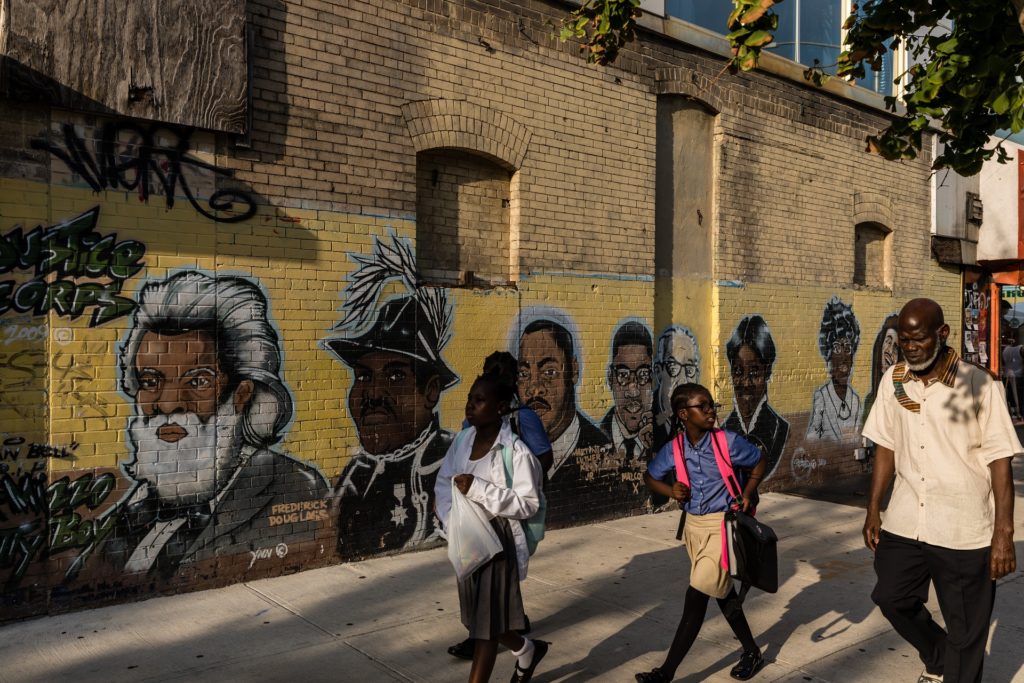Visit Bed-Stuy’s Fulton Art Fair, then take this stroll
Eye On Real Estate

Art and brownstones — an unbeatable combination.
You will find both in Bedford-Stuyvesant on June 23 and June 24.
Visual artists are taking part in an important annual event in the north-central Brooklyn neighborhood, the Fulton Art Fair, which is celebrating its 60th anniversary. As per tradition, they display their works by hanging them on the fence at Fulton Park.
This will be the fair’s final weekend. It began on June 9.
You should see the art show — and afterwards, take a stroll through the historic neighborhood.
There are many great routes for Bed-Stuy walks. Here’s what we suggest for fair-goers: Head up Stuyvesant Avenue, which is one of Fulton Park’s boundaries, turn at Jefferson Avenue and walk one block to Lewis Avenue, which is another park boundary. Then head down Lewis Avenue to the park. After that, weave through the side streets between the two avenues.
